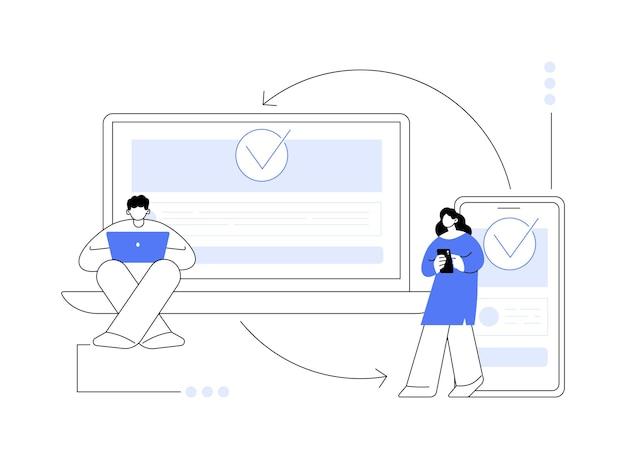Are you curious about foot traffic in retail stores? Do you want to know what constitutes high foot traffic and how important it is for business success? In this blog post, we will dive into the world of retail foot traffic statistics in 2018 and uncover valuable insights.
Foot traffic is a critical component of retail businesses as it is an essential factor in creating profitable sales. The higher foot traffic a business has, the greater the potential for generating higher revenue. But, what exactly is considered high foot traffic in retail stores?
According to industry experts, any store that attracts more than 60 potential shoppers per hour can be considered as having high foot traffic. However, some retailers have a much higher threshold based on their location and strategy.
Foot traffic is a valuable indicator of a store’s success as it is one way to measure consumer demand. It also plays a critical role in generating sales for local businesses. In fact, studies show that areas with high foot traffic can increase local business sales up to 30%.
In this blog post, we will explore the latest retail foot traffic statistics data and analyze trends in shopper behavior, the impact of foot traffic on business success, and ways to improve store traffic. So sit tight, and let’s dive into the world of retail foot traffic statistics.
What is Considered High Foot Traffic
When it comes to retail, foot traffic is a vital metric that directly impacts a store’s revenue. But what is considered high foot traffic? While there is no magic number that determines high foot traffic, there are certain criteria that retailers consider when evaluating their store’s performance.
Here are some factors that retailers usually take into account when assessing foot traffic:
1. Location
The location of a store plays a crucial role in foot traffic. A mall located in a densely populated city center is likely to attract more foot traffic than a mall in the outskirts of the city. Similarly, a store located near a busy street or public transportation hub is also expected to have higher foot traffic.
2. Time of Year
The time of year also affects foot traffic. For example, the holiday season is typically considered high foot traffic season for retailers. Similarly, back-to-school and the summer months are also times when retailers experience an uptick in foot traffic.
3. Day of the Week
Days of the week also play a role in determining foot traffic. Weekends are generally considered high foot traffic days, while weekdays are typically slower.
4. Type of Store
The type of store also affects foot traffic. High-end stores usually have lower foot traffic but attract customers who are willing to spend more. Conversely, stores that offer discounted products are likely to have higher foot traffic.
5. Store Size
The size of a store and its layout can also impact foot traffic. Stores with a smaller floor space are likely to have a higher density of customers, resulting in higher foot traffic.
In conclusion, what constitutes high foot traffic depends on various factors such as location, time of year, day of the week, type of store, and store size. Retailers need to evaluate their store’s performance based on these factors to determine what constitutes high foot traffic for their business.
How Important is Foot Traffic in Retail
If you own a retail store, then you might be wondering how important foot traffic is for your business. Well, it’s safe to say that foot traffic is the lifeblood of any retail store. Here are a few reasons why:
Building Brand Awareness
The more people walk by your store, the more they’ll get to know your brand. Even if they don’t come in to purchase anything right away, they’ll at least recognize your store and be more likely to return in the future.
Higher Sales
It’s simple math – the more people who enter your store, the higher the chances of making a sale. Plus, if you have a high volume of foot traffic, you can offer more personalized customer service and establish a loyal client base.
Market Research
By monitoring foot traffic trends, you can get a better understanding of your target audience and their buying behavior. You’ll be able to identify which products are selling well, which ones need some extra promotion, and what new products might be worth investing in.
Competitive Edge
If your store is located on a street or in an area with high foot traffic, you automatically have an advantage over competitors who don’t have as much visibility. This is why location is so important when it comes to opening a new retail store.
Online Visibility
In today’s digital age, foot traffic also plays an important role in boosting your online presence. The more people visit your store, the more likely they are to follow you on social media, leave reviews, and spread the word about your business.
To sum it up, foot traffic is an essential component of any successful retail business. Without it, you risk falling behind competitors, losing out on potential sales, and missing valuable market research opportunities. So, if your store isn’t seeing as much foot traffic as you’d like, brainstorm ways to improve your location, visibility, and overall customer experience.
Does Foot Traffic Drive Local Business
Foot traffic refers to the number of people who enter a store or business location in a given time frame. Local business owners rely on foot traffic as a crucial factor in their success. However, some might wonder whether foot traffic increases their business. In this section, we’ll explore whether foot traffic drives local business and some factors that contribute to this relationship.
The Relationship Between Foot Traffic and Local Business
Foot traffic can indeed increase local business. When more people enter a store or business location, it increases the chances of conversions or sales. More foot traffic can mean more opportunities for businesses to attract potential customers and turn them into loyal patrons.
Here are some ways in which foot traffic can drive local business:
- Foot traffic can lead to increased brand exposure and visibility in the local community.
- More foot traffic can translate into more sales and revenue for local businesses.
- Foot traffic can help business owners identify which products or services are most in-demand in their local area.
- Increased foot traffic can encourage existing customers to recommend a business to others, leading to higher sales and revenue.
Factors That Affect Foot Traffic
Several factors can impact the amount of foot traffic a local business receives. Here are some critical factors that business owners should consider:
-
Location: A store’s location can play a significant role in the amount of foot traffic it receives. Businesses located in high-traffic or heavily populated areas tend to receive more foot traffic.
-
Accessibility: If it’s challenging for customers to access a business location, it can negatively impact foot traffic. Businesses that provide ample parking spaces, bike lanes or are close to public transportation tend to receive higher foot traffic.
-
Storefront Appearance: A visually appealing storefront can grab the attention of passersby and attract potential customers inside.
-
Marketing Strategies: Effective marketing strategies can help business owners attract more foot traffic. Advertising in the local community, offering promotions and discounts, and building a robust social media presence can all help drive foot traffic.
Key Takeaways
- Foot traffic can indeed drive local business success by increasing sales and revenue.
- The location, accessibility, storefront appearance, and marketing strategies are all key factors that can affect the amount of foot traffic a local business receives.
- Business owners should focus on improving these factors to maximize their chances of attracting more foot traffic and increasing their overall success.

